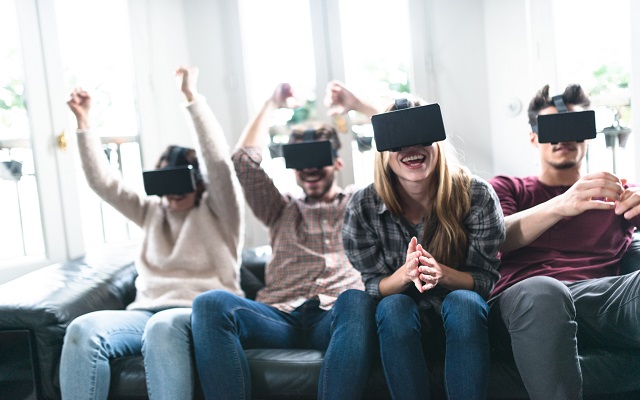
Cloud and the era of AR/VR Technology: What’s Next
We are on a course of discovery and while we might be seeing new, fascinating applications geared towards leveraging Augmented (AR) or Virtual Reality (VR), self-driving cars and sensors spread across a city to enrich people’s lives, we haven’t even scratched the surface.
The innovations seen in the last five years are already beyond imagination and the next five will bring even more. Powerful computing platforms coupled with efficient algorithms enable further mining of data value and maximisation of data efficiency, thus forming a virtuous circle. This allows companies to not only accelerate the integration of data but transform it into something useful for consumers. In fact, without large quantities of data, these new technologies wouldn’t be possible.
There are so many technological directions but no clear answer for explosive outcomes. The ideas and businesses that will succeed are those that conducted careful studies on consumer trends and behaviour, access the right data and have the ability to scale-up for any scenario.
A prime example is the Pokemon Go phenomenon, which in just a few short weeks surpassed Facebook as the most accessed application. Without location data, access to mapping datasets and a global, scalable cloud infrastructure, it would have never have been possible. Even with these things, connectivity was still an issue due to demand, making true scalability when demand rises, critical.
In order for VR to take off in a meaningful and practical way, cloud computing needs to be tightly integrated. The future of this technology depends on it and will open new opportunities for applications and usage models. Widespread adoption of this technology is hindered not only by cost of the headset but the infrastructure needed (processing power, graphics, etc.).
For example, a three minute VR video needs approximately 100,000 processor cores which is the equivalent to five servers processing non-stop for 100 days. With cloud computing, this can be run across several hundred cloud servers making development and production faster and more cost effective. With a technology like VR, UI is what makes or breaks the success of your application.
With the algorithm capacity and infrastructure provided by cloud computing technology, the ultimate experience of VR can be greatly enhanced by increasing definition, minimising system crashes and conserving bandwidth. On top of that, the development of VR technology requires powerful and flexible infrastructure support from the backend to supply visually rich and interactive content. Cloud not only improves efficiency but lowers operational cost.
As cloud is leveraged more widely for these technologies, we’ll start to see rapid developments happen in the industry, particularly around the intended purpose, increased functionality and a better UI. This will also translate to better user experience, whether the technology is being used for consumer or business use.
Whether it is an AR/VR application or any other cutting-edge technology high-quality data, robust computing platforms and efficient algorithm platforms are critical. It’s only when these three things come together, can we truly achieve a breakthrough and bring these technologies into the mainstream.
The cycle of innovation seen today is nothing new, but the iteration cycle has been drastically shortened and we’ll see what we saw 20 years ago with the shift from the PC to the wireless era. Before many companies could respond to the changes happening in the PC era, we entered the wireless era and some enterprises just couldn’t keep up.
AR/VR technology will see the same as it represents moving from a two-dimensional space to a three-dimensional one, enabling us to understand the world at a deeper level. But, this will mean some of the early adopters and innovators will fall and give rise to the second era of applications in the space.


